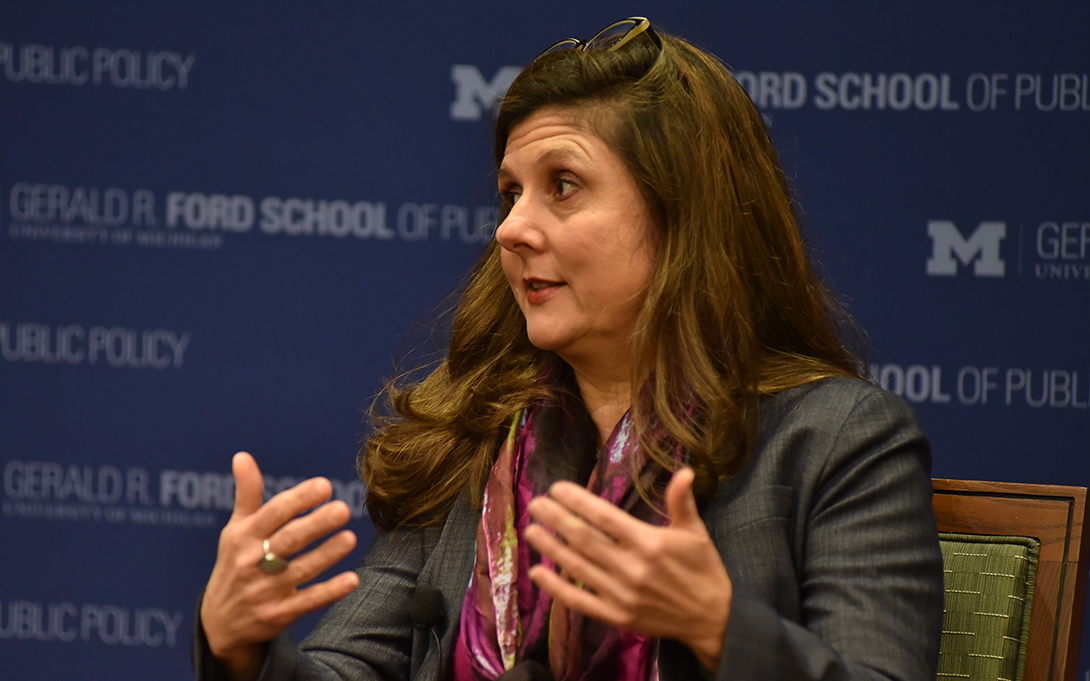
Ford School economics professor Betsey Stevenson was widely sought after for analysis after a strong monthly jobs report. Here are some excerpts of her appearances:
Taming Inflation, CBS Face the Nation, June 5, 2022
It's important to realize when we take a look at the labor market, that we haven't seen all the jobs come back in services. We've definitely seen the jobs come back in the goods- producing sector. In the service sector, in health care and education and particularly caregiving, we haven't seen everyone get hired back. Maybe because people are slow to go back to wanting to consume those services. And it may be that it's just hard to find people to take those jobs right now.
What everybody wants consumers to do is slow their role a little bit on spending. And that would actually bring some of the pressure on prices down. So the Fed is raising rates, hoping that consumers will spend a little bit less. All of the accusations around how much did the stimulus spending contribute, it's really about, “Did we give people too much money in their pockets?” They're in some of the best financial shape they've ever been. And the result is that demand is outstripping supply a little bit.
But the reality is that we don't have to stop job growth in order to stop inflation. We might end up accidentally stopping job growth, pushing ourselves into a recession, but we do not have to do that. What we need to do is get demand down a little bit while supply can continue to grow.
Fed looks for Goldilocks: Taming inflation without tanking economy, MSNBC, June 3, 2022
It is a good thing to see wage growth. It's a good thing for people to see the enormous number of opportunities that are out there with employers having just record numbers of job openings. What that means is that you really have a chance to look around and find the right job for you, one that's going to be a great match for your skills, that's going to provide you the wages that you want. Maybe live near family or friends where people can provide childcare or relatives you need to give elder care to. It's really -- it's a great time out there to get the job that you want. And so that is good for a lot of people.
And so there is not much the administration or the Fed can do about rising gas prices. That is just a pain we are all going to share.
So they want to bring it down just enough, the right amount. That's why you hear a lot of people talking about the Goldilocks economy. We want to see them bring demand down enough that we get rid of some of that pressure on prices, but not so much that people start losing their jobs. And that could be a tough place for them to land. That is actually why they moved slowly.
One thing I just want to be clear about is that inflation hurts a lot of people. People don't like it. But it is a shared pain. Unemployment really hurts the people who lose their jobs. And it is actually more of a disproportionate knock on those who are the ones who lose their jobs, who get laid off, who get pushed out of the labor market.
What the May jobs report says about the nation’s economic outlook, PBS NewsHour, June 3, 2022
If you go back to the 2008 recession, it took over eight years for us to get unemployment below 4 percent. And we did that in less than two years. We have got unemployment that is stable at 3.6 percent, which is just great.
We have seen, in particular, labor force participation among women start to increase over the last sort of four to six months. Some of that may be due to the fact that schools are finally starting to settle down, not sending kids home for as many you have got to do a two-week remote school because of this COVID outbreak. Might be a little bit of that.
But what we have seen is steadily, over the last few months, these women are coming back. What happens in most recoveries and is happening in this one is that the more highly educated people come back faster and first. So we have seen, in particular, labor force participation among college-educated women recover much faster.
But we are starting to see some recovery in the labor force participation of women with less education. That does tend to happen more slowly. And I personally hope that the economy stays strong enough to bring more of those women back in over the next few months.
Labor force participation was disappointing in May jobs report, says Tyler Goodspeed, CNBC, June 3, 2022
We saw women’s labor force participation hit a post-pandemic high. The question was, “Will women return to the labor force?” and what we are seeing is that it is starting to increase.
We saw job losses in bargain retail stores, but they were more than made-up for in gains in transportation and warehousing, so this switch to people buying online and getting out of retail stores accelerated in the pandemic, and what we are seeing is that it is clearly not reversing.
Economist on May employment data: 'People are showing up for the jobs', Yahoo! Finance, June 3, 2022
I think some of what the administration needs to be doing is keeping an eye on where inflation might go. And that's why they need to be thinking about the labor market. I'm very worried if we start to see prices going up in things like medical care, in education services. We see prices rise too rapidly in sort of leisure and hospitality. So that all would be coming out of not being able to hire enough workers.
What can the administration do about that? Well, it can try to increase immigration. We've had our-- we've had people not coming into the United States as much over the last two years. And so the stock of people we have from other countries is much lower. And that's causing problems in some industries. So we could work on immigration policy. We could try to particularly get our lowest wage workers back into the labor force by encouraging them with an expanded earned income tax credit, so another thing they could do.
They should also be making sure that people can afford to get the training that we need for places where we might start to see shortages, things like community college vocational programs, where we've seen enrollments decline over the last couple of years. And that's likely to cause labor market shortages and pricing pressure down the line. I think the most important thing for them to do right now is make sure that this inflation does not continue by spilling into services.

